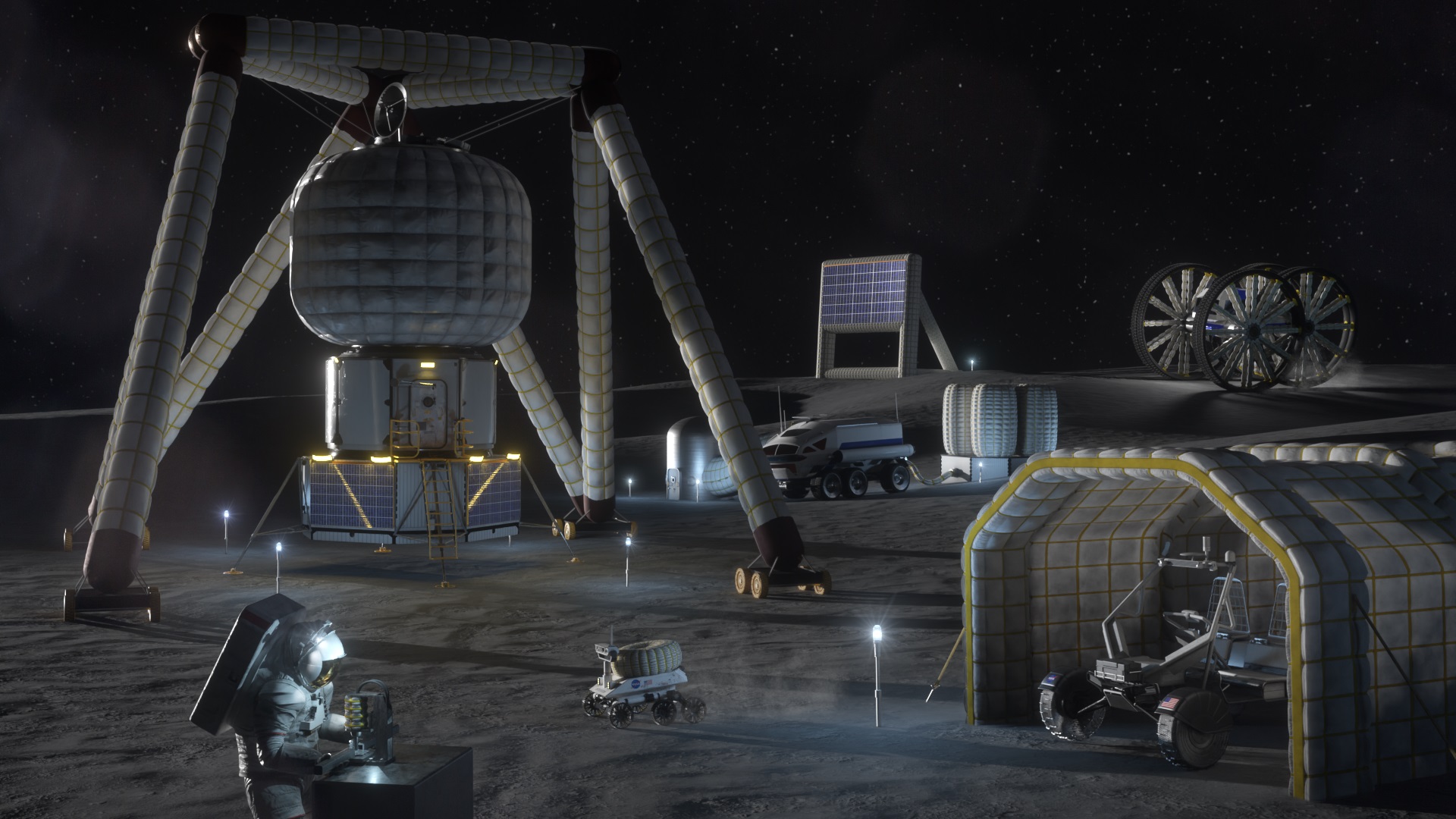Every year, NASA’s Breakthrough, Innovative, and Game-Changing (BIG) Idea Challenge invites student innovators to build and demonstrate concepts that can benefit future human missions to the Moon and beyond. This year’s theme is “Inflatable Systems for Lunar Operations,” which could greatly reduce the mass and stowed volume of payloads sent to the Moon. This is critical for the Artemis Program as it returns astronauts to the Moon for the first time since the Apollo Era over fifty years ago. It will also reduce the costs of sending payloads to the Moon, Mars, and other deep-space destinations.
The BIG Idea Challenge is sponsored by NASA’s Space Technology Mission Directorate (STMD) as part of a collaborative effort between its Game Changing Development (GCD) program and the agency’s Office of STEM Engagement. The competition is managed jointly by the National Institute of Aerospace (NIA) and the Johns Hopkins Applied Physics Laboratory (JHUAPL) and funded by the GCD and the National Space Grant College and Fellowship Project. As part of the challenge, teams of 5-25 students and their faculty advisors will submit proposals, and five to eight finalists will be selected for further development.
Despite decades of growth and development, the greatest challenges for sending crewed missions to space remain volume and mass limitations. Like it or not, launches are still subject to the Rocket Equation, which creates a vicious cycle where larger payloads require more propellant to break free of Earth’s gravity. This, in turn, means larger rockets with heavier propellant tanks, and so on. As such, large structures cannot be placed on the lunar or Martian surface without complex deployment mechanisms and on-site assembly.
NASA has explored multiple solutions to this problem, which include using local resources to create building materials and provide for astronaut needs – aka. In-Situ Resource Utilization (ISRU). This has the advantage of reducing the amount of supplies astronauts will need to bring with them while reducing dependency on resupply missions. Another solution is to send large, inflatable systems, which are low-mass and can be tightly packed into payload fairings. Once they reach their destination and are inflated, they expand to become many times their stowed volume.
Along with advanced fabrics and internal pressure stiffening, inflatable systems can offer robust habitats and environmental protection against harsh extraterrestrial conditions. This is the purpose of the 2024 BIG Idea Challenge, where collegiate-level teams are tasked with innovative inflatable surface components. These range from towers, gantries, and antennas to soft robotics, actuators, connectors, deployment mechanisms, airlocks, and temporary shelters. Niki Werkheiser, Director of Technology Maturation at NASA’s STMD, said in a recent NASA press release:
“This challenge is particularly exciting because it applies out-of-the-box thinking to the design and engineering processes that will be required to incorporate inflatable components into space missions. Harnessing the impressive creativity demonstrated by this collegiate cohort could present truly novel solutions for future space exploration.”
Finalists will be selected by a panel of NASA and industry experts who will evaluate the proposal and video package of mission scenarios that incorporate inflatable systems. The five to eight terms selected will receive a stipend of between $50,000 and $150,000, including expenses for hardware, materials, testing equipment, software, etc. The teams will spend the next nine months further developing, refining, and testing their proposals and preparing a 15-20 page technical write-up detailing their results. This will be followed by the annual BIG Idea Forum next Fall, where they will be invited to present their concepts for a technical design review.

This will include proof-of-concept demonstrations in analog test environments that simulate lunar conditions. Said Tomas Gonzalez-Torres, the space grant project manager for NASA’s Office of STEM Engagement:
“When it comes to mission-critical technology for upcoming space exploration efforts, academia is an important partner. Collegiate-level teams push the envelope in terms of creativity but also in demonstrating technology readiness for innovative ideas. These ideas can be infused into technology development at micro and macro scales.”
This year’s competition compliments the 2023 Lunar Forge Challenge, where undergraduate and graduate students were awarded up to $180,000 to design, develop, and demonstrate technologies that will enable the production of lunar infrastructure through ISRU-derived metals. These and other technologies will be crucial to the Artemis missions and the long-term goals that NASA, fellow agencies, and commercial partners have to establish permanent infrastructure on the Moon. In addition to fostering lunar exploration, research, and possibly settlement, these efforts will enable future missions to Mars and beyond.
To learn more about the 2024 BIG Ideas Challenge and how you may enter, check out the BIG Idea website at bigidea.nianet.org.
Further Reading: NASA

